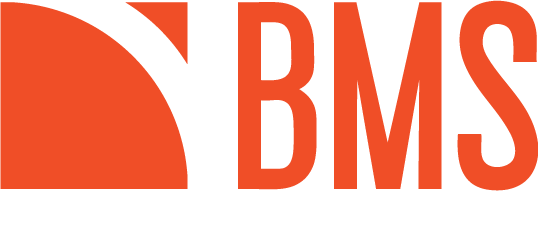Networking is the best way to land a new and better job – even when you are still employed. The natural way to do that is by actively asking the people who are already in your network (1st tier connections) and with their help tapping into their networks (2nd tier connections) as well.
Inspiration, tips, and help can come from very unexpected places – so networking is a great way to cast your net wide and wait for luck to come your way.
With the same token, one can argue that you have to be focused: what and who should you be looking for in your networks to find a new job?
Intuitively you might be attracted to the most popular people in your network – they know everybody and everybody knows them. But will they spend the time to help you?
From experience, you are better off beaming your attention on friends with well-positioned connections – especially if they are in your professional space! They can be any type of person, but making sure you have a couple of recruiters in your network is never lost as they can connect you with companies and networks outside of your normal habitat.
How to easily land a new job through Networking?
As a recruiter for the past 15 years, people often come to me and ask me for a job. 99.99% of the time, I have to disappoint them and tell them that currently, we don’t have a job opening that matches their expertise or aspirations. And to deflect their obvious disappointment, I answer their question with what they alternatively can do to find a job.
My recurring, eternal advice: use your networks for Networking. Most of the time, people understand this as either “Ah I have to befriend everybody that I come across on LinkedIn and Facebook” or “Oh I have to attend evening networking events and start partying”, which can be good for many things but typically won’t bring them any closer to a job.
Think out-of-the-box! And define Networks as broadly as possible: two or more people regularly interacting with each other.
From there, I gently nudge them to list the networks they are or can be part of. A starting point is friends on Facebook and LinkedIn, but almost always more interesting are:
The pub they go for a drink and where they have active friendships,
The people they regularly talk to in the condominium where they live,
The sports clubs – even individual sports lead to friendships,
The networking sports par excellence golf and sailing
The workmates, bosses from previous companies they have worked for,
The clients they have served or the suppliers they have worked with,
If they have children, the parents of classmates of their kids,… Probably the richest and most diverse source to find a new job.
Rapping up: take an honest and detailed look at your “Life” from a networking perspective and write it down. Some might even make a spreadsheet, so they can easily keep track of contact details.
A Network of First- and Second-tier Friends

At the end of your mapping exercise, suppose you end up with 30 friends defined as people whom you regularly talk to and that you can rely on to help out now and then. These are your first-tier networking connections.
These 30 friends will have friends of their own. For the sake of argument, say each of them has 30 friends as well. Possibly there is some duplication with yourself and you end up with 15 “new” fresh possible connections per friend which means 450 possible new Second Tier connections.
That is already a lot to deal with and it will take time to connect with them face-to-face – go for a coffee or a drink. Befriending a friend of a friend works best with direct contact and goes beyond a LinkedIn or Facebook friend request.
Therefore it makes sense to focus your efforts and to do some further study with your 1st tier friends and observe/analyze how they and where their friends are positioned in their networks
“The single greatest ‘people skill’ is a highly developed and authentic interest in the other person.” — Bob Burg”
Selection Criteria(*)
To assess their position in their networks, you can look at 4 characteristics inherently present in all networks:
- Popularity:- Who is popular? Who has the most friends? Popular people are disproportionately observed and hence can bias people’s views. They have a disproportionate influence on the others in the network
But it doesn’t end there. Popularity is just one of the relevant factors.
- Connections:- Who has important/influential friends in their networks that are well connected – Having many friends can be useful, but it can be equally or even more important to have a few well-positioned friends in your network. This ends up being circular in nature: a well-connected person is influential because she/he is connected to other influential people and this goes on endlessly.
This characteristic forms the basis of the Google algorithm: websites that are connected to other
important well-connected websites (backlinks or backrub), come out on top for a particular keyword
searches
The same is true for human networks: your well-connected friends are more likely to be able to help
you.
“Networking is an enrichment program, not an entitlement program.”
Susan RoAnn
3. Reach:- Who is well-positioned to spread information quickly and broadly and is likely one of the first to hear new information? Can a given individual reach many others within a short number of hops in the network, before people lose interest?
In a village or neighborhood community, these are the “chatterboxes” who will make sure that every piece of gossip is circulated.
4. Brokerage and Bridging:- Is a person in a unique position to coordinate with others? Does a person serve as a bridge from one group to another, connecting otherwise disconnected groups? If you have recruiters in your network, they are very well-positioned to take on this role.
Who should you target in your job search?

The most popular people? The well-connected ones? Or the chatterboxes? Or rather go for the recruiters in your network as bridgers and coordinators?
It depends on the structure and nature of the networks that you are dealing with, and of your own preferences and professional background.
From experience, my advice is:
- Focus in the first instance on Influential friends and on influential friends of these friends- they are the key to success because you can align your job preferences with their influence sphere.
- Work with and talk to the recruiters in your network: try to identify specialized recruitment agencies operating in your sector or field of expertise.
- Chatterboxes are only helpful to spread the message that you are looking for a job and you might get lucky – maybe. It’s a lottery.
- Popular people: they don’t have time for this. Put your CV on LinkedIn, JobsDB etc – if you want to be seen instead
Once you see clearly in your priorities, the real work starts by expanding your second-tier network, by deepening your connections and showcasing what you can do for them.
“You can have everything in life you want if you will just help enough other people get what they want” — Zig Ziglar
This article is about people finding a job, but you can use a similar process and analysis of your network if you want to sell cakes, offer training, paintings, suitcases…
Further reading:
* Matthew O. Jackson, The Human Network, Paperback Pinguin Random House, 04-2020




